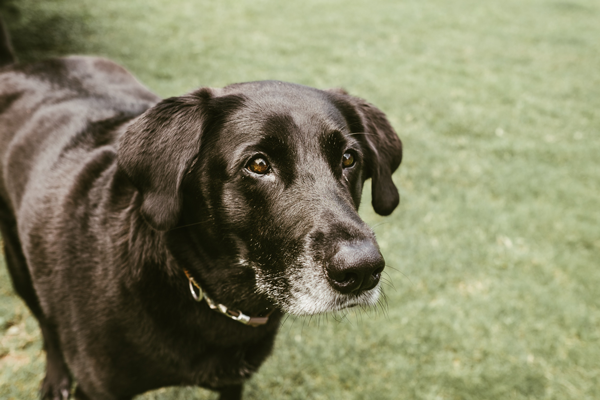Introducing Low Impact Exercises
Exercise is part of a healthy and happy dog’s life. However, as dogs age, 65% of them will develop arthritis. As a condition that causes inflammation of the joints, arthritis can make even simple walks and other normal activities painful. You can choose to exercise your dog with low impact workouts that are less painful for their joints.[1]
Identify the right kind of exercise for your arthritic dog. The least pain-inducing exercises for dogs with arthritis are low impact and high resistance exercises. Low impact exercises lessen the weight that is applied to the joints, making them more comfortable for dogs with joint pain. High resistance exercises, on the other hand, are exercises that provide high resistance to the muscles being exercised, making them more developed and larger without stressing the joints.
- Examples of low impact and high resistance exercises include swimming and walking on an underwater treadmill. In an underwater treadmill exercise, the dog is placed on a treadmill that is enclosed in a glass container that can be filled up with water.
Exercise your dog on an underwater treadmill. Underwater treadmills are a great way to exercise dogs with arthritis dogs, but they are often cost prohibitive for most owners.[2] Ask your vet about local facilities or clinics that offer underwater treadmills or hydrotherapy exercises for dogs. Most large animal clinics or hospitals offer this service.Ideally, you can exercise your dog on an underwater treadmill every day.
- Start with short walks that last about 10 minutes and gradually increase their duration as your dog gets used to the exercise. As your dog gets stronger, they can walk for longer periods of time.
- Underwater treadmills have adjustable speeds and have water temperature controls, because heat increases blood circulation, which reduces joint swelling and pain.[3]
Take your dog swimming. Swimming is a great low impact way to exercise your pup.[4]Take your dog to a lake, pond, or dog-friendly pool for a swim. You can let them swim on their own accord or throw a buoyant toy for them to retrieve. [5]
- If your dog isn’t a strong swimmer, consider purchasing a doggie life vest to help keep them buoyant. You can teach them to swim with or without a doggie life vest.
Go for a gentle walk. Take your pet for a short walk to get them moving. Start off with short walks, and gradually increase their length over time if your dog isn’t in pain. Start off with walks that are 10-15 minutes long once or twice a day. Softer surfaces, like grass or even carpeted floors, are better than rough surfaces like concrete. You also want to walk them on flat areas without any hills.[6]
- Do not run or jog with your arthritic dog.
- Avoid taking them on walks in the early morning or at night since colder temperatures can exacerbate joint pain.
Warming Up and Cooling Down Your Dog for Exercise
Warm up your arthritic dog by performing range of motion exercises. Range of motion exercises gently move certain joints, like an elbow or hip, through the joint’s entire range. This range runs from flexion (bent) to extension (straightened out). To perform a range of motion exercise, lay down your dog on their side on a mattress or blanket, with the limb you intend to exercise positioned towards you.[7]
- With one hand, support the limb you intend to exercise below and above the joint at a natural position so that your dog is comfortable and without pain.
- Flex the limb as slowly as possible until it reaches a natural flexed position that the dog is comfortable with (stop if the dog feels pain) and hold it in this position for 3 to 5 seconds.
- After flexing the limb, slowly or gently return it to its original position and extend it all the way outwards. Repeat the gentle flexion and extension exercise 10 to 15 times.[8]
Massage their joints. A gentle joint massage for five to ten minutes every day can help to relieve some of their arthritis pain. Massage helps to keep the joints flexible and warm up muscles prior to exercise. Start by petting the areas around their joints to warm up the tissue. Then, place your hand over the area and start making small, circular motions while gently compressing the muscle. Finish by petting the area again to soothe the nerves.[9]
- Do not massage joints that are currently aggravated. If your dog winces or seems to be in pain, stop massaging that area immediately.
- This is also a great way to bond with your dog.
Dry your dog. After exercising your dog on the underwater treadmill or by swimming, thoroughly dry your dog using soft towels so that your dog will not be chilly. Cold temperatures can decrease blood circulation and cause joint pain. If you opted to take them for a walk, be sure to warm them up if you’ve been in damp or cool weather.
Do cool down exercises with your dog. After exercise, your dog’s muscles need to be cooled down. Perform the same range of motion exercises by repeating the same procedures that you performed when warming your dog up.
- Perform these exercises in a warm area or inside so your dog will be more comfortable.
Provide a warm resting environment for your dog. Warm temperatures can help to increase blood circulation, thereby reducing pain and inflammation. On the other hand, cold temperatures can exacerbate symptoms of arthritis. After you’ve had an opportunity to exercise your pup, make sure they have a warm and comfortable area to rest in.
- Provide your dog with a thick, soft dog bed to sleep on. There are also heated dog beds that you can purchase for your arthritic dog.
Making Exercise More Comfortable
Help them maintain a healthy weight. Extra weight puts unnecessary stress on your dog’s already damaged joints. By keeping them at a healthy weight, you can help to eliminate this additional source of stress and pain. Because your dog cannot exercise like they would if they didn’t have arthritis, maintaining a healthy diet is your best bet to keep them at a healthy weight.[10]
- Dogs that are a healthy weight will also have an easier time exercising than will an overweight dog.
- A healthy diet should provide a balance of protein, carbohydrates, and fats. Avoid feeding your dog table scraps, since human food is often more calorically dense. Limit the number of treats you give your pet.
Give your dog vet-prescribed pain medication. If your dog is in a lot of pain, talk to your vet about what medications might be right for your dog. Your vet will most likely prescribe an NSAID (non-steroidal anti-inflammatory drug) that will help to combat pain and reduce swelling. Pain management medications can make exercise much more comfortable for your dog.[12]
- These medications are prescription only; do not self-medicate your dog.
Supplement your dog’s diet with vitamin C. Vitamin C has been found to help improve joint mobility in dogs. It can also help prevent further joint damage in some dogs. When dogs are stressed, especially due to physical stress caused by conditions like arthritis, they can be prone to a Vitamin C deficiency.[13]
- Talk to your vet about Vitamin C supplements to see if they think it would help your dog.[14]
Consider giving your dog additional medications. Certain medications can help prevent further joint damage by maintaining joint health. Glucosamine and chondroitin sulfate both help to repair connective tissue and keep already existing cartilage healthy. Arthritis will degrade your dog’s joints, but these medicines can help to slow this process.[15]
- Talk to your vet before you give your dog any additional supplements or medications.
- These medicines will not repair any structural damage caused by arthritis, like torn cartilage or advanced scar tissue. These can only be corrected through surgery.[16]
Warnings
- Arthritis is a progressive condition. There may come a time when your dog’s condition has progressed to a point where they are in severe pain. They may no longer be able to continue exercising, so speak with your veterinarian when their arthritis reaches an advanced stage.
- Exercise within your pet’s capabilities. Never over-exert your pet for the sake of exercise.
- Never let your dog swim without your close supervision.

